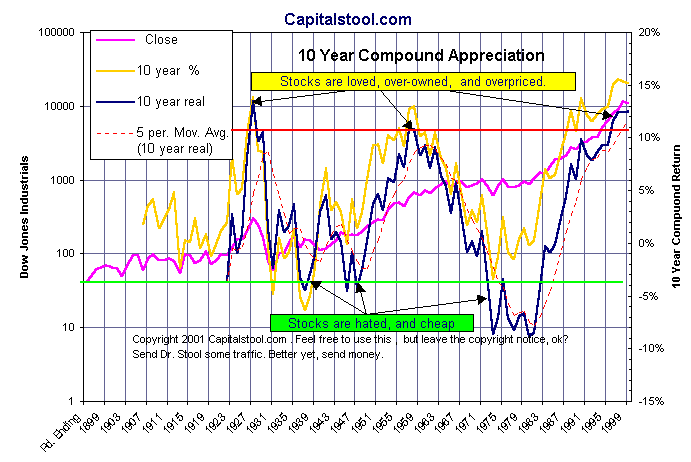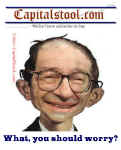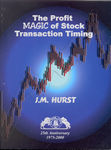|
Subscriber Sections The
Anals MoGauge © Subscription Help (Login, Password etc.) Free Forums Resources Market Stats and Kitco Thumbnail Charts Bear
Essentials Marketviews with Ike Iossif Prudentbear.com
Humor Wall Street Follies Financial Funnies Hilarious! by stoolie prolerbear Not
In My Backyard for Capitalstool. Support the Stool! |

We
don't know and neither do they.
Long Term- Stocks Are a Lousy Investment
Stepan N. Stool, PH &D (3/27/01)
OK, not all the time, but about a third of the time. And those times follow long periods of high returns, like the 1920s, and the fifties and sixties, and the last ten years, which will be no exception. For example, if you had bought stocks in 1958, ten years later you would have had a negative return relative to inflation. Well, not quite, with dividends you would have had a slightly positive return. But it got worse after that.
In 1999 and 2000, the real, inflation adjusted, 10 year rate of appreciation on the Dow reached 12.5%, a level seen before only in 1927. Based on that, Dr. Stool guarantees, GUARANTEES, that if you bought a diversified portfolio of stocks at any time in the last two years, or if you buy at any time in the next year, ten years from now you are going to be sitting with a negative real rate of return.
How do you like them apples? By the way, Dr. Stool has no intention of making good on that guarantee. He just wants you to study the chart below very closely.
The data is through year end 2000. A down year this year will turn those blue and gold lines south, and that will be the final death knell. Ask not for whom the bell tolls, it tolls for thee, Wall Street charlatans. OK, so Dr. Stool is anticipating (and maybe dramatizing) a little.
The point is, over the last 10 years we've bought our way to the most long term overbought market in the history of the world. WHO THE HELL ARE WE GOING TO SELL THIS CRAP TO, our kids? No way, the next generation will learn to hate stocks, just like Dr. Stool's generation did in the 1970s. Relative to inflation, stocks had negative real rates of appreciation over each ten year period beginning in 1958 and ending in 1968 through 1986. In other words, if you bought in 1958, you lost. Fifty-nine, same, 60, 61, 62 etc. etc. The first year you could have bought stocks and enjoyed a positive 10 year appreciation rate after inflation was 1977. Now there's a helluv'an argument for T-Bills. Just keep rolling them over and you'll do just fine.
Obviously, since this is year end data only, there were some times during those years when prices were weak, when you could have bought and done all right, like the 74 bottom. But on the whole, if you bought any time from the late 1950s through the late 1970's, that's, lets see, twenty years(?), you were toast.
This is the environment we are in now. Forget stocks. Use every rally to get out. These stocks are not coming back. It's over. Our generation has blown it's wad. Party over. Stocks suck for the long haul.
Buy T-Bills, and quit worrying. You'll start sleeping again.
Scroll down to chart!!
What are you looking at? There's nothing here. Scroll down.
|
Click symbol or name for expanded quote page
StoolMart NEW NAME, SAME GREAT PRODUCTS!
|

Chart Notes: The hot pink line is the annual closing price of the Dow. The gold line is the 10 year compound appreciation rate. The navy line is the 10 year real compound appreciation rate. It is equal to the 10 year appreciation rate adjusted by the CPI change over the same period.
The left scale is the Dow Industrials on a logarithmic scale. The right scale is the percentage change. Stocks are long term overbought when the real 10 year compound appreciation rate equals or exceeds 11%.They are oversold when the real 10 year compound rate of appreciation falls to below -3%.
When stocks reach overbought levels, they have provided declining, or poor returns for 20 years after reaching those levels. Stocks became overbought in 1996. The chart suggests that if you bought stocks in 1996 or subsequently, you are likely to see your investment turn negative and stay negative until approximately 2016.



